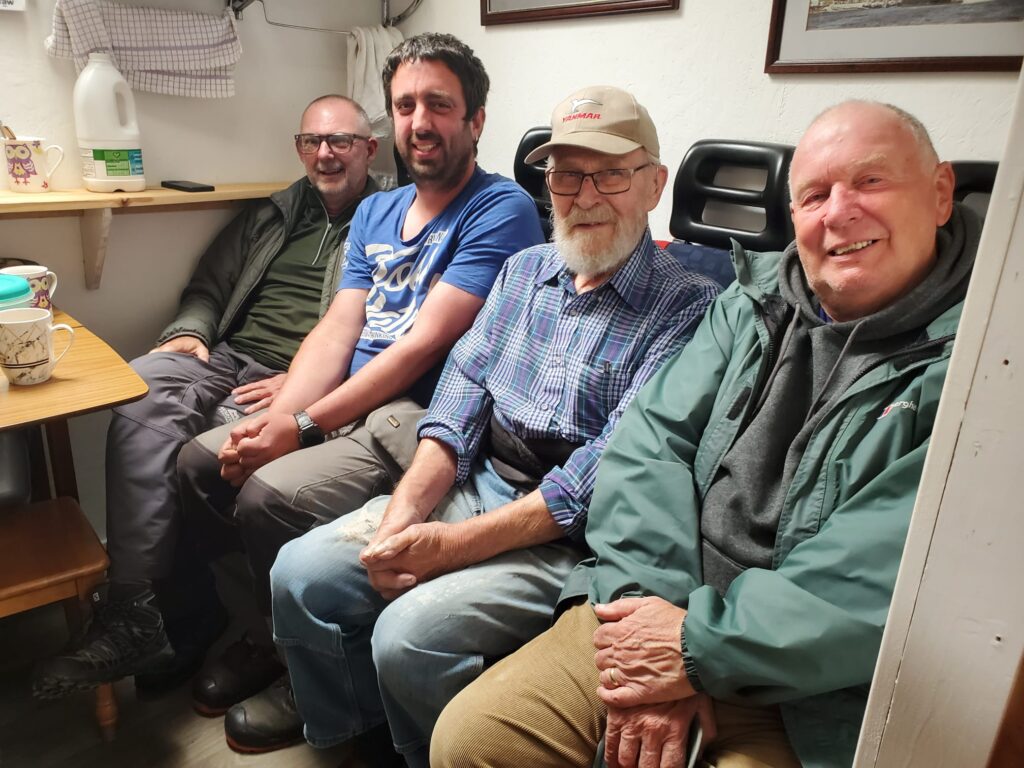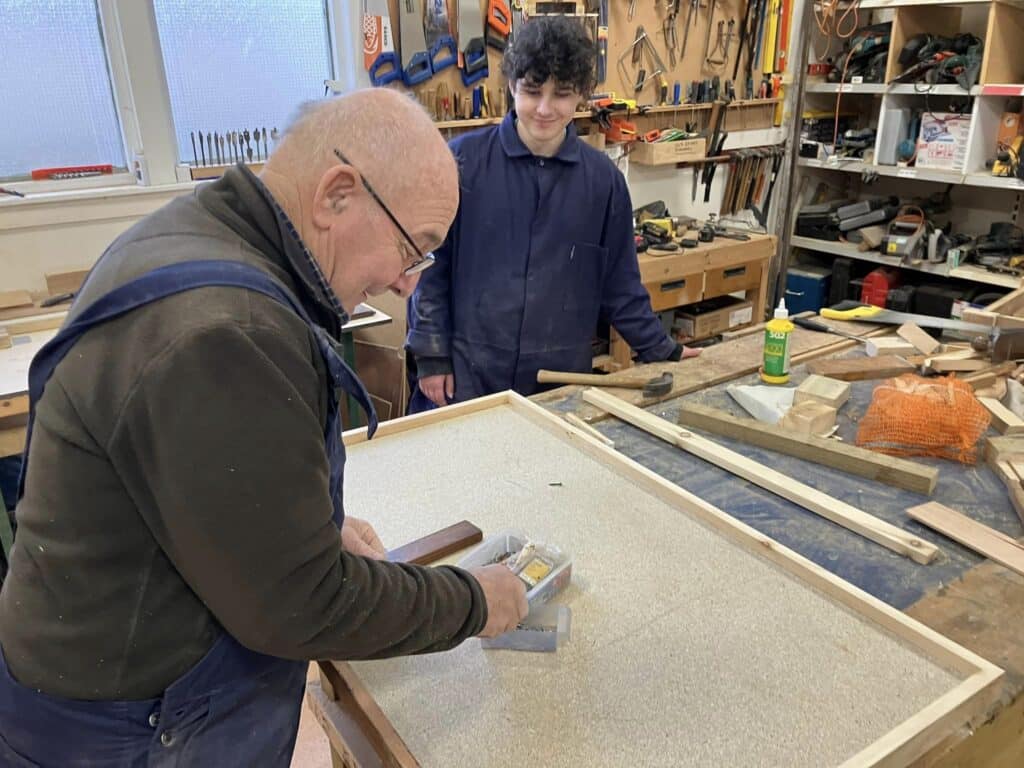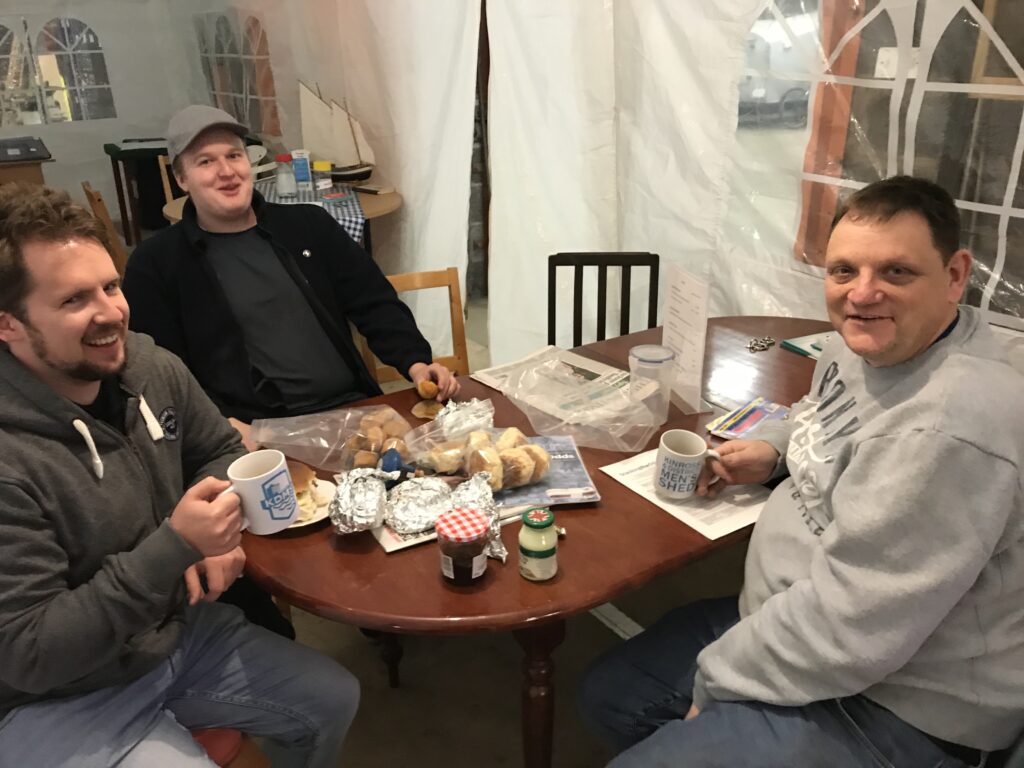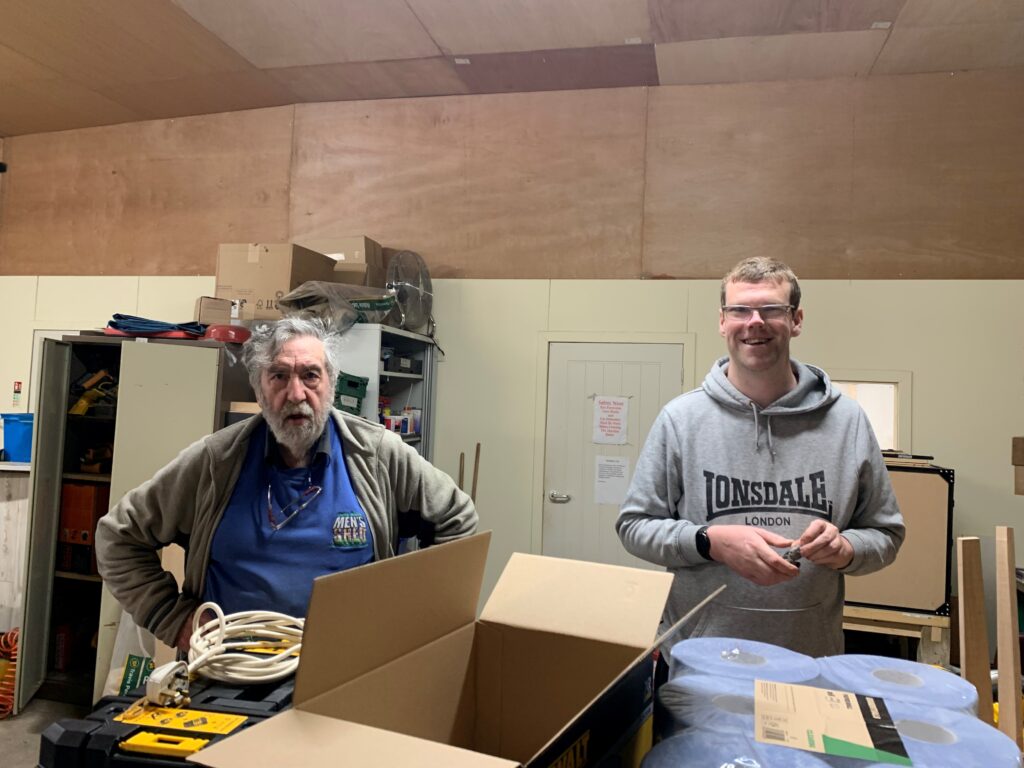Bridging Generations
Bridging Generations: Attracting young men to the Scottish Men’s Shed Movement
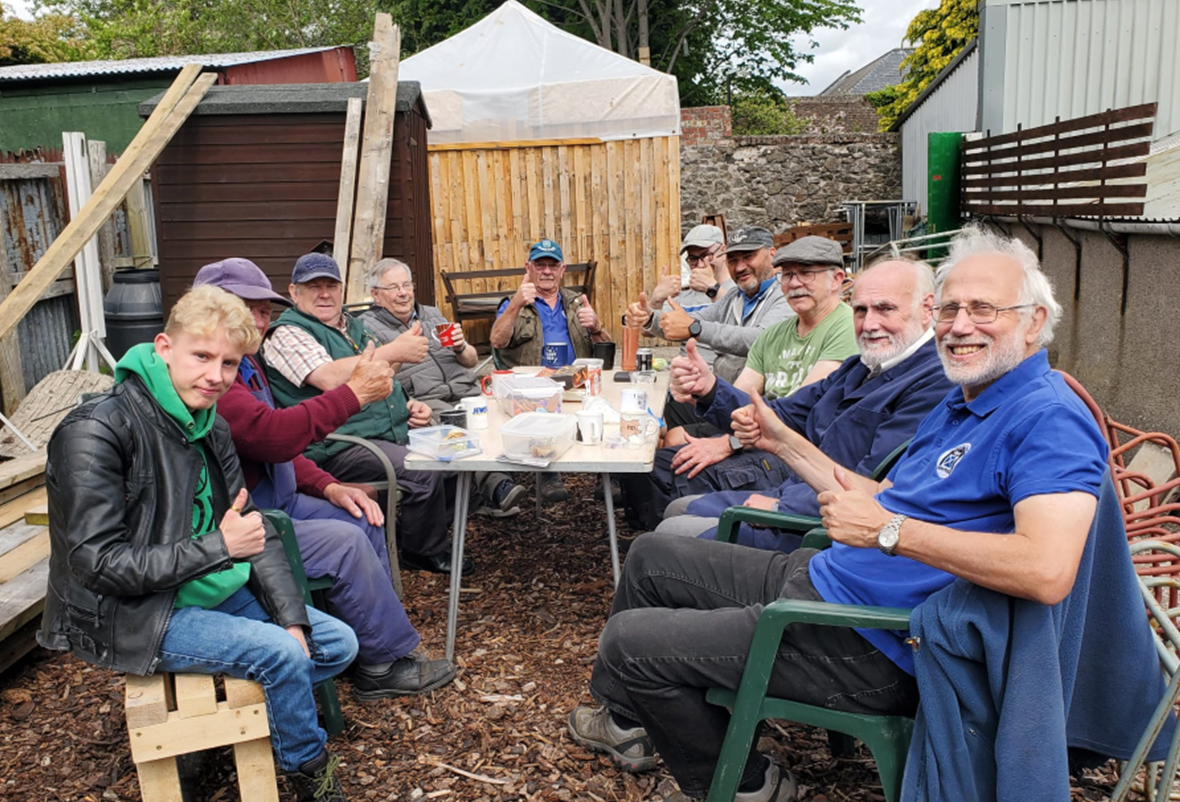
Over the past decade, Men’s Sheds have been a lifeline for thousands of older men across Scotland. Over time, it has become clear that the benefits of the Shed movement shouldn’t be limited to just older generations. By engaging younger men, Sheds can pass on valuable traditional skills, knowledge, and the values of connection and wellbeing to future generations, helping ensure that Sheds continue to exist and thrive for many years to come.
Why young men need the Shed
Increasingly, attention is turning to engaging younger men—those aged 18+—who also face isolation, stress, and a lack of purpose. In the UK, loneliness is particularly prevalent among 16–24-year-olds. A 2018 Office for National Statistics (ONS) survey revealed that almost 40% experienced loneliness “often or very often”.
Unlike previous generations, many younger men are often more willing to challenge the “strong and silent” stereotype passed down from our fathers and grandfathers. They are, in many ways, more confident discussing emotions, less bound by outdated norms, and more open to seeking connection and support. Men’s Sheds offer a unique opportunity to untangle these outdated perceptions and offer a new way of thinking for the future—showing that it’s okay to talk, ask for help, and connect with others in our communities for learning, purpose, and camaraderie.
Many younger men in Scotland today face a range of pressures, including academic or work-related stress, digital overload, unemployment, the cost-of-living crisis, and a shortage of positive male role models, mentors, and elders.
With many youth centres and clubs now closed, many young men struggle to find the unique support once provided by youth workers—professionals who are neither parent nor teacher, but a confidant, mentor, and guide.
Sheds provide a relaxed, non-judgemental environment where men can work side by side and shoulder-to-shoulder, learn and develop practical skills, and share conversations—or simply enjoy the company of others.
The power of intergenerational mentorship
Bringing younger men into Sheds creates opportunities for mentorship, mutual learning, and social growth. Older members can share life experience, trades, and skills, while younger participants can also bring modern skills, energy, digital literacy, and fresh ideas.
This collaboration benefits both generations: it challenges stereotypes, builds understanding, and fosters healthy masculinity rooted in cooperation, respect, and shared purpose.
Intergenerational Sheds offer a fresh model for cross-generational connection, helping communities grow stronger and more supportive.
Intergenerational Shed Model opportunities:
- Collaborative projects: Young and older members work side by side on shared learning initiatives, such as community builds, repairs, or school gardening programmes.
- Mentorship opportunities: Young men can learn from older Shedders’ skills and life experience, while older members gain fresh perspectives and energy.
- Tailored activities and projects: Expanding Shed activities to engage younger participants’ interests, creativity, and skills.
- Access to new funding streams: Opens doors to funding specifically aimed at youth development, wellbeing, and community projects.
A future built together
By opening doors to younger men, Sheds can become a bridge across generations, creating spaces where experience meets energy, and wisdom meets innovation.
One promising avenue lies in a potential partnership between the Scottish Men’s Sheds Association (SMSA) and Youth Scotland, the national charity supporting community-based youth work. The two charities recently met at the Royal Highland Show and discussed collaboration. Both organisations share core values around community, health, and empowerment. Working together, they could open a new chapter in intergenerational support and learning across the country.
By nurturing the next generation of Shedders, we are not just preserving a legacy—we are strengthening and future-proofing it.
The tools are already on the bench, now let’s build that bridge.
